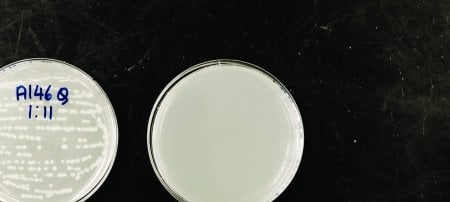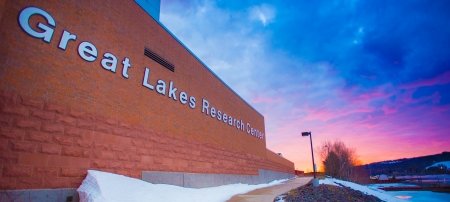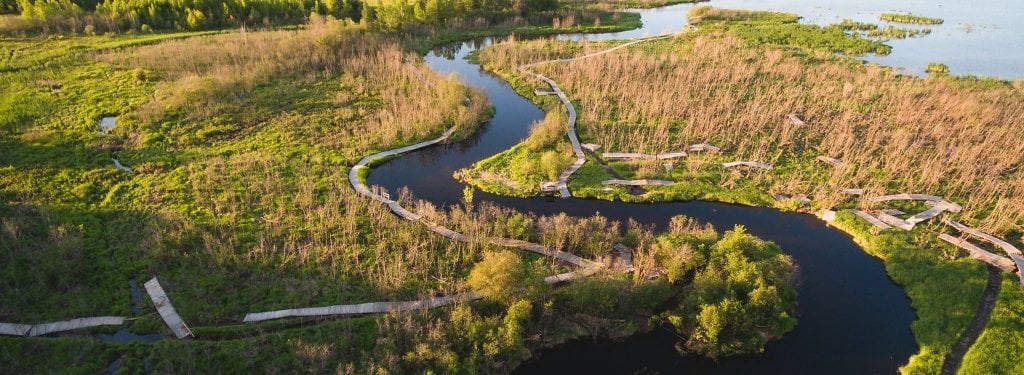Michigan Tech Alumnus, Apps Turn Ordinary People into Hydrologists

Adam Ward’s got a lot of helping hands as he tries to determine stream and lake depths in Iowa. Through CrowdHydrology.org, anyone can read the water level off a ruler (more scientifically, stream stage off a staff gauge) and text the numbers to an online database.
The citizen scientists are helping researchers elsewhere, too—New York, Wisconsin, Utah and Michigan—and it’s all the brainchild of Ward’s colleague, Chris Lowry, an assistant professor in the Department of Geology at the University of Buffalo.
“With budget cuts proliferating, I had to figure out how to measure streams in a cheap fashion,” says Lowry. “I got a giant ruler, laminated a sign at Kinko’s and set up the first gauge using Google voicemail and help from the USGS for the texts. It worked.”
Ward, a Michigan Technological University alumnus and researcher at the University of Iowa, says there are some obvious advantages to everyone pitching in.
“We can crowdsource valuable data about stream stage and discharge, both of which are key for calibrating models and validating performance when we’re focused on stormwater management and regional flood control,” he explains. Ward also notes that this data, coupled with grab-samples for water quality, can help researchers estimate pollutant loads in our waterways.
But, the long-term success of the project requires more than just people reading the height of water on a ruler.
“We need to have caretakers for each site,” Ward says. “Someone who will notify us if a gauge is washed-out in a flood, or if our signage needs to be replaced.”
For example, in Iowa City during a huge rainstorm, they received several stream-stage readings, one every couple of hours, so they could get a complete picture of the water levels during the event.
“So, we had someone going out there and getting soaked,” Ward laughs. “But at least their phone kept working, and we got the information.”
Ward and Lowry agree that crowd hydrology is about more than the great data they are getting.
“It’s about engaging the public, so that when they are reading the gauge, they are noticing the stream, noticing the dynamics of the area,” Ward says. “I’d like to get schools involved, if they have a stream running through their property.”
Lowry also envisions K-12 classes adopting a stream and doing the measuring.
“We can engage the next generation of scientists,” he says. “If we can capture them in seventh grade, then they are the ones who will go on to become our graduate students and take over our work.”
The ubiquity of smartphones helps drive the research, and the apps are the creation of Michigan Tech undergraduate and graduate classes, under the supervision of Robert Pastel, associate professor of computer science, and Alex Mayer, professor of civil and environmental engineering.
“The apps allow people to also take photos and upload them,” Pastel says. “They can photograph the water, gauge and stream characteristics, too. Is it murky, clear? Is it moving?”
It’s a true collaborative effort.
“The HCI [human computer interaction] undergraduates design and implement it; the HCI graduate students test and evaluate it, and the humanities students do usability testing and write the help screen,” Pastel explains.
Mayer adds, “We’re proud to have the CrowdHydrology app as part of our Cyber Citizens project, which is sponsored by the National Science Foundation (NSF). It’s great to work with excellent scientists like Adam and Chris to help them obtain the data they need for their research. The CrowdHydrology effort is a wonderful example of citizen science, which is rapidly becoming an important part of scientific research and has the added benefit of engaging the public in science.”
In addition to Michigan Tech’s participation, Lowry says Michigan is one of the best states in terms of volunteers.
“We’ve gotten great responses from caretakers at the Betsy River near Traverse City and the MetroPark system around Detroit,” he says. “And in Dewitt, it’s become a popular attraction in their city park.”
And the citizen scientists’ work is incredibly accurate, Lowry says.
“We only get 10 percent of numbers we can’t use, and of the other 90 percent, we are basically in the range of as good as the eyes can see,” he says. “As for the 10 percent, we call that the ‘fat thumb scenario,’ where you just make errors while texting.”
Michigan Technological University is an R1 public research university founded in 1885 in Houghton, and is home to nearly 7,500 students from more than 60 countries around the world. Consistently ranked among the best universities in the country for return on investment, Michigan's flagship technological university offers more than 185 undergraduate and graduate degree programs in science and technology, engineering, computing, forestry, business, health professions, humanities, mathematics, social sciences, and the arts. The rural campus is situated just miles from Lake Superior in Michigan's Upper Peninsula, offering year-round opportunities for outdoor adventure.




Comments